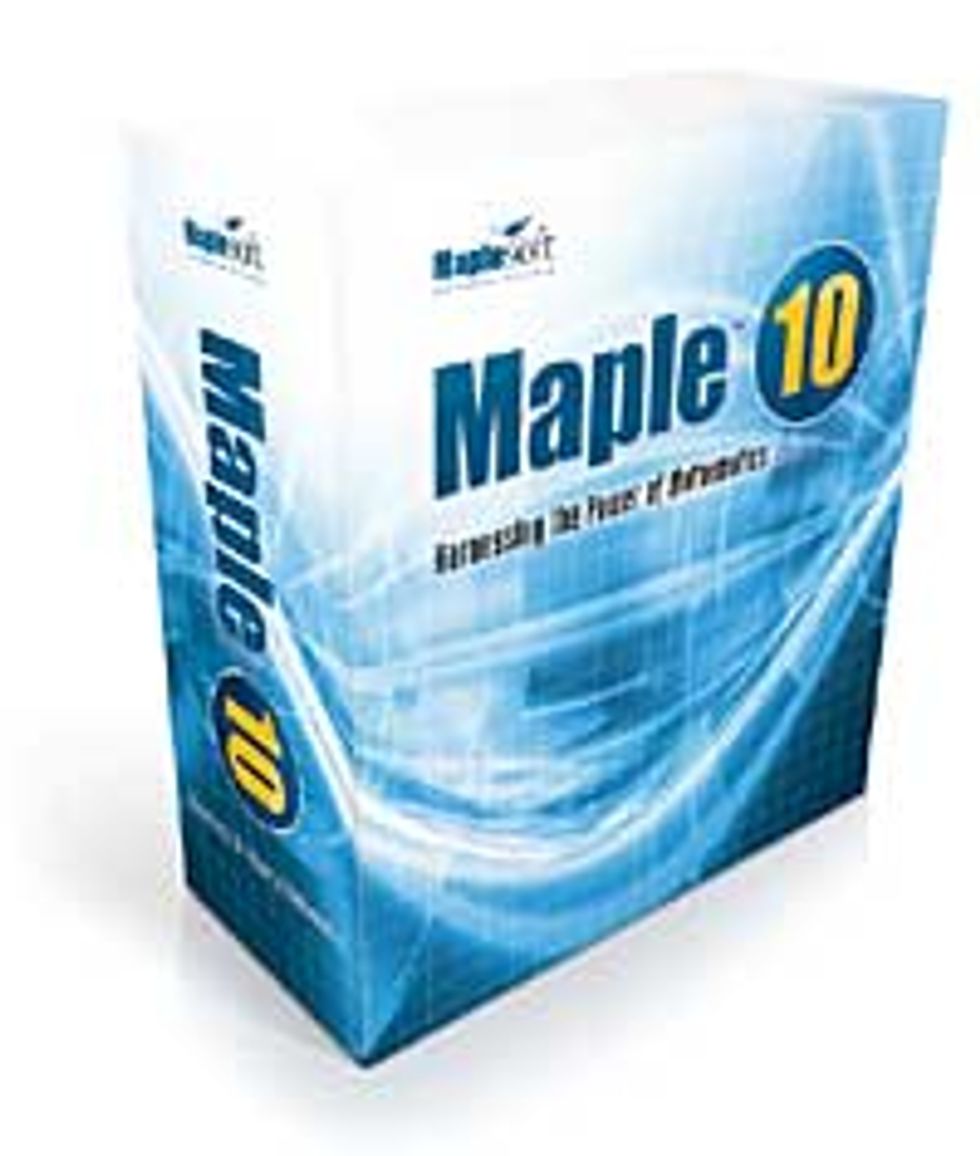Originating in the 1970s as a symbolic math program, Maple has evolved into a high-end math package that, its vendors claim--probably correctly--is used in virtually every major university and research center in the world. This latest update from Waterloo Maple Inc., in Waterloo, Ont., Canada, adds still more to an already large package.
Maple 10
Waterloo Maple Inc., Waterloo, Ont., Canada. US $1995. Contact: telephone: +1 519 747 2373 or +1 800 267 6583; fax: +1 519 747 5284; e-mail:
The most obvious addition is a sparkling new graphical user interface, which replaces the previous plain command-line interface. Numerous on-screen palettes allow users to insert symbols such as integral signs or Greek characters into worksheets with a mouse click. A new equation editor and other enhancements also lets them create worksheets with nicely formatted, textbook-style layouts rather than the clunky documents produced by older releases of Maple. What's more, the layouts can be recalculated with a simple command.
These enhancements move Maple in the direction of technical publishing--an approach taken to much greater lengths by Mathematica, developed by Wolfram Research Inc., Champaign, Ill., Maple's closest competitor.
Some of Maple's enhancements will appeal to novice users. People tired of hunting for the correct key combination or menu entries for mathematical symbols can draw the symbol using the mouse, and Maple will recognize it. New templates let them complete more than 200 different tasks by filling in the blanks. The help system has been improved, and there are new Task Assistants for importing and exporting data, among other features.
Maple is smarter, too. Important changes include beefed-up routines for the symbolic solution of differential equations and statistics. Efficiencies have been added for memory management and numerical routines. And there appear to be only minor incompatibilities with other recent releases of Maple; my worksheets for Maple 6 through 8 ran without a problem. Those accustomed to the older command-line interface can choose to work wih the "classic worksheet" option.
But the enhancements are expensive in terms of computing resources. Maple 10 with the new interface takes more RAM space to load and runs noticeably slower than it does with the "classic worksheet" interface. It required 60 megabytes compared with 4 MB on my system. Experienced users, who simply want to solve math problems, might prefer the command-line interface.
Most users with maintenance contracts undoubtedly will have already received their updates. For many others, the new features might not be sufficiently compelling to warrant a pricey upgrade. But this latest version is a significant improvement to an already stellar product.
About the Author
KENNETH R. FOSTER (IEEE Fellow) is a professor in the department of bioengineering at the University of Pennsylvania (
